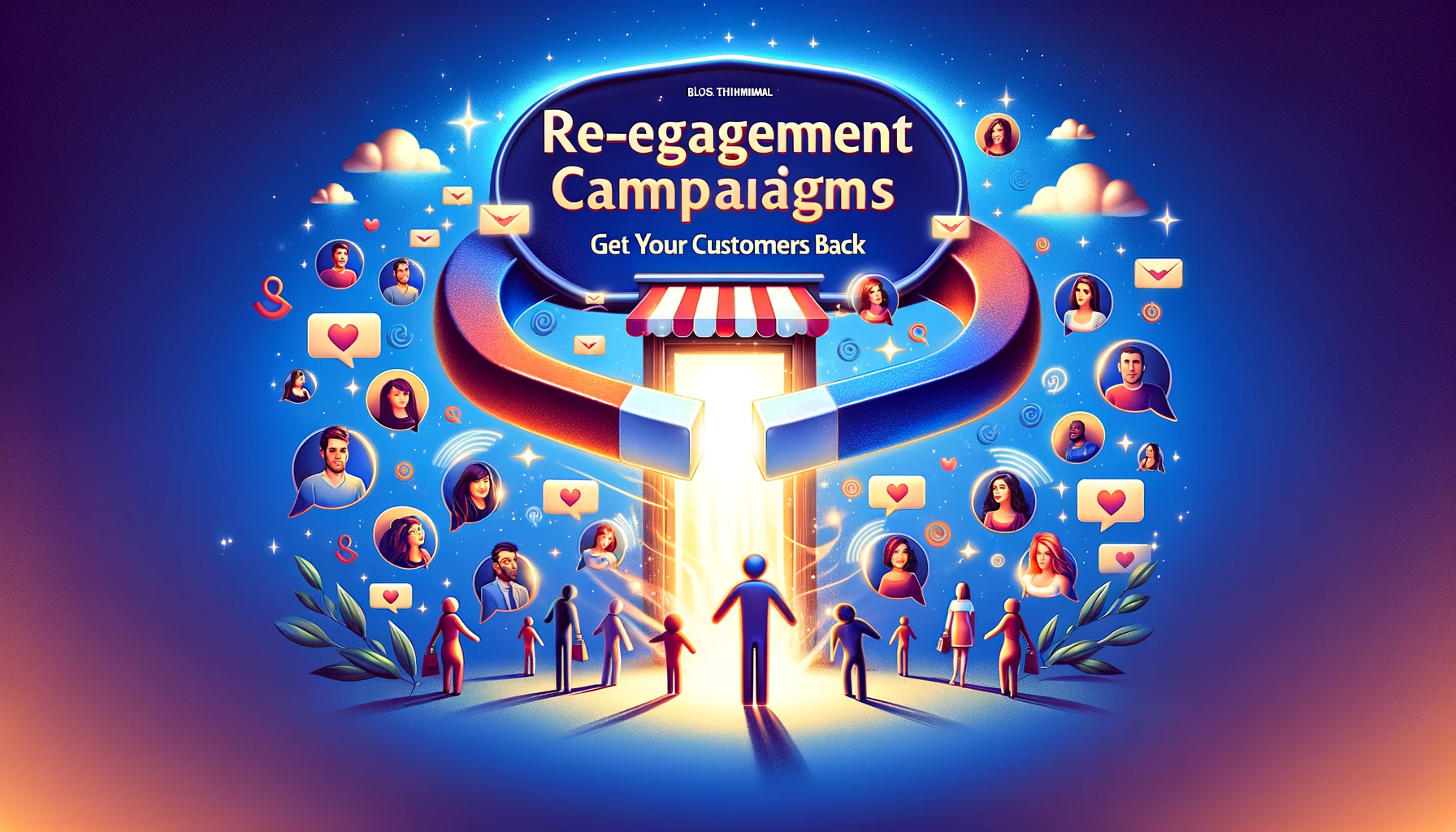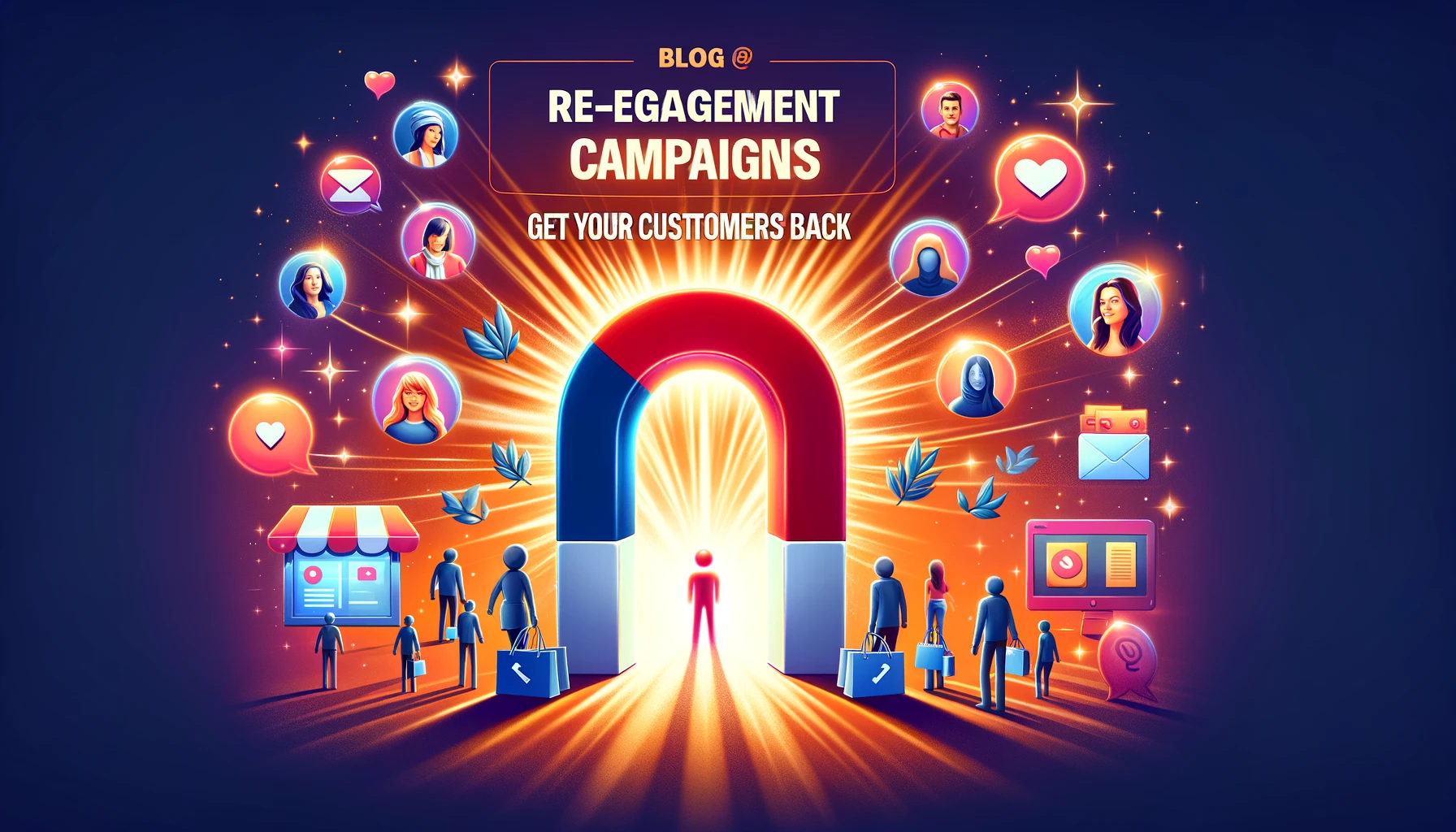Re-engagement Email Campaigns: Get your customers back
What is a Re-engagement Campaign and Why is It Important?
Definition of Re-engagement
Re-engagement refers to the process of reaching out to subscribers or customers who have shown decreased interest or activity with your brand's emails or services. It's a targeted effort to rekindle interest and encourage them to engage with your content, products, or services again.
Importance of Re-engagement Strategies
Re-engagement strategies are crucial because they help in retaining customers, which is often more cost-effective than acquiring new ones. They identify and address the reasons behind the decreased engagement, helping to improve the overall health of your email list and ensure your messages reach an engaged audience.
Benefits of Re-engagement Campaigns
Benefits of re-engagement campaigns include improved email deliverability, as sending emails to engaged users reduces the risk of landing in the spam folder. They also help in segmenting your list more effectively, allowing for more personalized and targeted marketing efforts that can lead to higher open rates and conversion rates.
How to Create Effective Re-engagement Emails?
Key Components of a Re-engagement Email
An effective re-engagement email should include a compelling subject line that grabs attention, a personalized message that acknowledges the subscriber's inactivity, and a clear call-to-action (CTA) that offers a reason to re-engage, such as a special offer or a preview of what they’ve been missing.
Tips for Personalizing Re-engagement Messages
Personalize re-engagement messages by using the subscriber's name, referencing their past interactions with your brand, and offering content or deals that align with their interests. Utilizing data to tailor your message can significantly increase the chances of re-engagement.
Best Practices for Crafting Compelling Subject Lines
Crafting compelling subject lines for re-engagement emails involves creating a sense of urgency or curiosity, using action-oriented language, and personalizing where possible. Subject lines like "We miss you, [Name]! Here's a special gift to welcome you back" can be highly effective in prompting opens and re-engagement.
By understanding and implementing these re-engagement campaign strategies, email marketers can significantly improve their engagement rates, retain more subscribers, and enhance the overall effectiveness of their email marketing campaigns. Personalization, compelling content, and strategic outreach are key to rekindling interest and encouraging inactive subscribers to become active participants in your brand's community again.
Successful Re-engagement Strategies
Examples of Re-engagement Email Templates
Effective re-engagement email templates often start with a personal touch, acknowledging the subscriber's absence and expressing that they've been missed. They might include a special offer, an update on what's new, or a request for feedback on why the subscriber has disengaged. The goal is to make the subscriber feel valued and missed.
Implementing a Killer Customer Re-engagement Email
A killer customer re-engagement email grabs attention from the subject line, delivers value in the content, and makes it easy for the recipient to re-engage. This could be through a compelling offer, an intriguing update about your service or product, or an invitation to update email preferences to receive more personalized content.
Increasing Engagement Rates through CTAs
To increase engagement rates, CTAs in re-engagement emails should be clear, compelling, and relevant to the recipient. Whether it's an invitation to take a survey, a special discount code, or a link to new, relevant content, the CTA should provide a clear next step to re-engage with your brand.
Measuring the Effectiveness of Re-engagement Campaigns
The effectiveness of re-engagement campaigns can be measured through marketing metrics such as open rates, click-through rates, conversion rates, and the number of inactive users who become active again. Tracking these metrics before and after the campaign provides insights into its impact and areas for improvement.
Managing Inactive Subscribers in Email Marketing
Cleaning Your Email List for Better Deliverability
Regularly cleaning your email list by removing inactive subscribers who haven't engaged with your emails over a set period can significantly improve email deliverability rates. This practice ensures your emails reach those truly interested in your content, enhancing overall engagement.
Re-engaging with Inactive Users through Special Offers
Offering a discount or special promotion exclusively to inactive users can be a powerful incentive to re-engage. This strategy shows subscribers that their engagement is valued and gives them a tangible reason to interact with your brand again.
Utilizing Marketing Software for Re-engagement
Marketing software can automate the process of identifying inactive subscribers and deploying re-engagement campaigns. Features like segmentation, personalized email automation, and detailed analytics help tailor re-engagement efforts for maximum effectiveness.
By implementing these strategies and leveraging the right tools, marketers can successfully re-engage inactive subscribers, improving the health of their email list and the overall success of their email marketing efforts. Personalization, valuable offers, and clear CTAs play key roles in reviving subscriber interest and fostering renewed engagement.
Best Practices for Re-engagement Campaigns
Keeping Your Emails Out of the Spam Folder
To keep your emails out of the spam folder, ensure your email list is clean and updated, removing any addresses that consistently bounce. Use a reputable email service provider known for high deliverability rates. Avoid using spam trigger words in your email content and subject lines. Also, encourage your subscribers to whitelist your email address by adding it to their contacts.
Strategies to Encourage the Next Purchase
Encouraging the next purchase in your re-engagement campaigns can involve offering exclusive discounts or access to new products for a limited time to create a sense of urgency. Personalize the offers based on the subscriber's previous purchase history or browsing behavior to make them more relevant and enticing. Highlighting product benefits, customer testimonials, and offering a seamless purchasing process can also motivate inactive subscribers to make a purchase.
Creating an Effective Re-engagement Email Sequence
An effective re-engagement email sequence starts with a warm-up email that acknowledges the subscriber's inactivity and expresses your brand's desire to reconnect. Follow this with targeted campaigns offering valuable content or incentives tailored to their interests. Incorporate email automation to send these emails at optimal times based on subscriber behavior. The sequence should gradually escalate the value offered, culminating in a compelling call-to-action that encourages re-engagement.
Implementing Targeted Campaigns for Re-engagement
Mobile Devices
Considering the high rate of emails read on mobile devices, ensure your re-engagement campaigns are optimized for mobile viewing. Use responsive design for your email templates, keeping subject lines short and engaging, and CTAs visible and easily clickable on smaller screens. This ensures a pleasant reading experience, encouraging higher engagement from subscribers viewing emails on their mobile devices.
Targeted Re-engagement Campaigns
Targeted re-engagement campaigns are crucial for winning back inactive subscribers. Segment your email list based on the subscribers' past interactions, preferences, and purchase history. Tailored messages resonate more deeply with recipients, making them feel valued and understood, significantly increasing the chances of re-engagement.
Sense of Urgency
Creating a sense of urgency in your emails, such as time-limited offers or last-chance notifications, can motivate inactive subscribers to take immediate action. Use clear and compelling language in your subject lines and content to convey the urgency, and ensure the offer is genuinely enticing and valuable to your audience.
By adhering to these best practices, marketers can significantly improve the performance of their re-engagement campaigns. Personalization, strategic incentives, and optimizing for mobile are key elements in crafting successful re-engagement efforts that not only bring back inactive subscribers but also enhance the overall effectiveness of your email marketing strategy.
Inagiffy: Your Ultimate Newsletter Marketing Partner
In today's crowded digital landscape, building genuine, lasting connections with your audience is more crucial than ever.
Enter Inagiffy – a premier newsletter marketing agency that understands the transformative power of well-crafted newsletters. We're not just about sending out emails; we're about curating stories, insights, and value that resonate deeply with your audience.
Our end-to-end solutions ensure that from ideation to delivery, every newsletter reflects your brand's essence and speaks directly to your audience's needs and aspirations. Let Inagiffy empower your brand, forging authentic relationships and driving engagement through the potent medium of newsletters.
Dive into the future of meaningful communication with us and watch your audience grow, engage, and thrive.
FAQs
How do you write a reactivation email?
To write a reactivation email, start with a captivating subject line that grabs attention. In the body, acknowledge the recipient's absence, express that they've been missed, and offer a compelling reason to re-engage, such as an exclusive offer or update. End with a clear, compelling call-to-action that guides them on what to do next.
What is an example of a re-engagement text message?
"Hey [Name]! We've missed you at [Brand]. Here's a 20% off coupon just for you to welcome you back. Use it on your next purchase: [Link]. Expires in 48 hours. See you soon!"
How many emails in a reengagement campaign?
A reengagement campaign typically includes 3-5 emails, spaced out over several weeks. This series starts with a gentle reminder of the brand's value, escalates to offering incentives for re-engagement, and concludes with a final notice or feedback request to gauge the subscriber's interest in continuing the relationship.
What is engagement mail?
Engagement mail refers to any email sent with the purpose of engaging subscribers, encouraging them to interact with the brand through opening emails, clicking on links, or taking specific actions. These emails aim to foster a strong, active relationship between the brand and its audience, boosting loyalty and conversions.


Comments
Your comment has been submitted successfully!